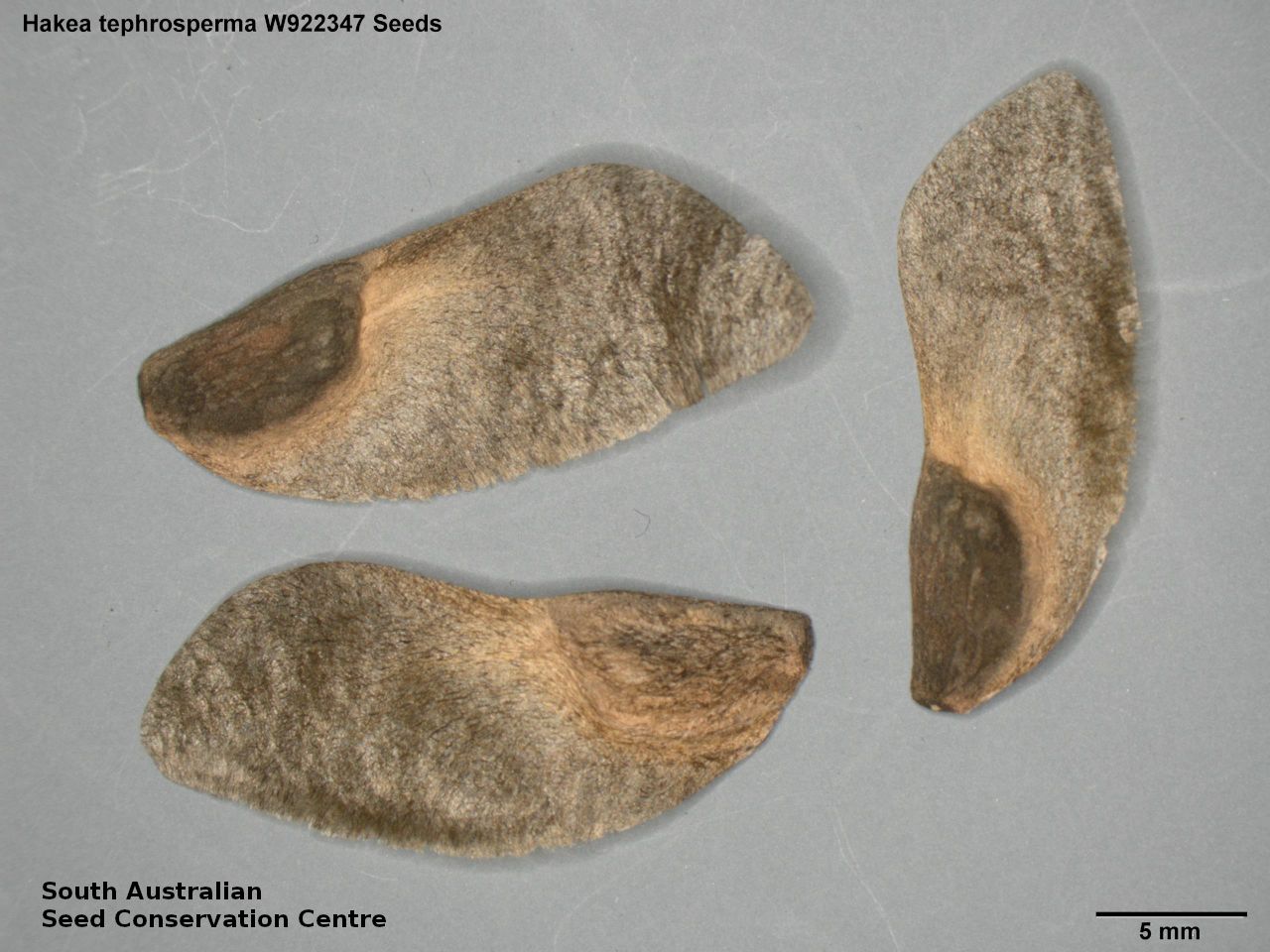


Botanical art
Prior names
Hakea leucoptera, partly
Etymology
Hakea, named after Baron Christian Ludwig von Hake (1745-1818), a German horticulturalist and patron of botany. Tephrosperma, from the Greek 'tephros', meaning ash-grey or grey and 'spermus' meaning a seed, referring to the colour of the seed of this species.
Distribution and status
Found in the central western part of South Australia growing in open spinifex and bluebush shrubland. Also found in Queensland, New South Wales and Victoria. Native. Rare in South Australia. Common in the other States.
Herbarium regions: Eastern, Murray
NRM regions: South Australian Arid Lands, South Australian Murray-Darling Basin
AVH map: SA distribution map (external link)
Plant description
Shrub or small tree to 8 m high with hairy young branches. Leaves terete, not grooved; to 80 mm long and 1.5 mm wide, wholly glabrescent; apex abruptly curved. Inflorescence clusters of 6–22 white flowers. Flowering between September and October. Fruits are greyish-brown woody ovoid fruit to 30 cm long to 20 mm wide, with a long pointed tip. Fruit splits into two, to reveal two seeds. Seeds are greyish-brown ovoid seed to 9 mm long and 5 mm wide (24 mm long and 10 mm wide, including the wing that extends down one side of seed). Seed embryo type is investing.
Seed collection and propagation
Collect seeds between December and March. Collect mature woody fruit that are hard, brown and not split. These will contain seeds. Place the woody fruit in a tray and leave to dry until it split open. Fruits can be placed in the oven at low temperatures to achieve the same result. Place the dried fruit in a bucket and shake to dislodge the seeds from the valves. Separate the seeds from the fruit and store the seeds with a desiccant such as dried silica beads or dry rice, in an air tight container in a cool and dry place. Seeds are non-dormant, viable seed should germinate readily without pre-treatment.